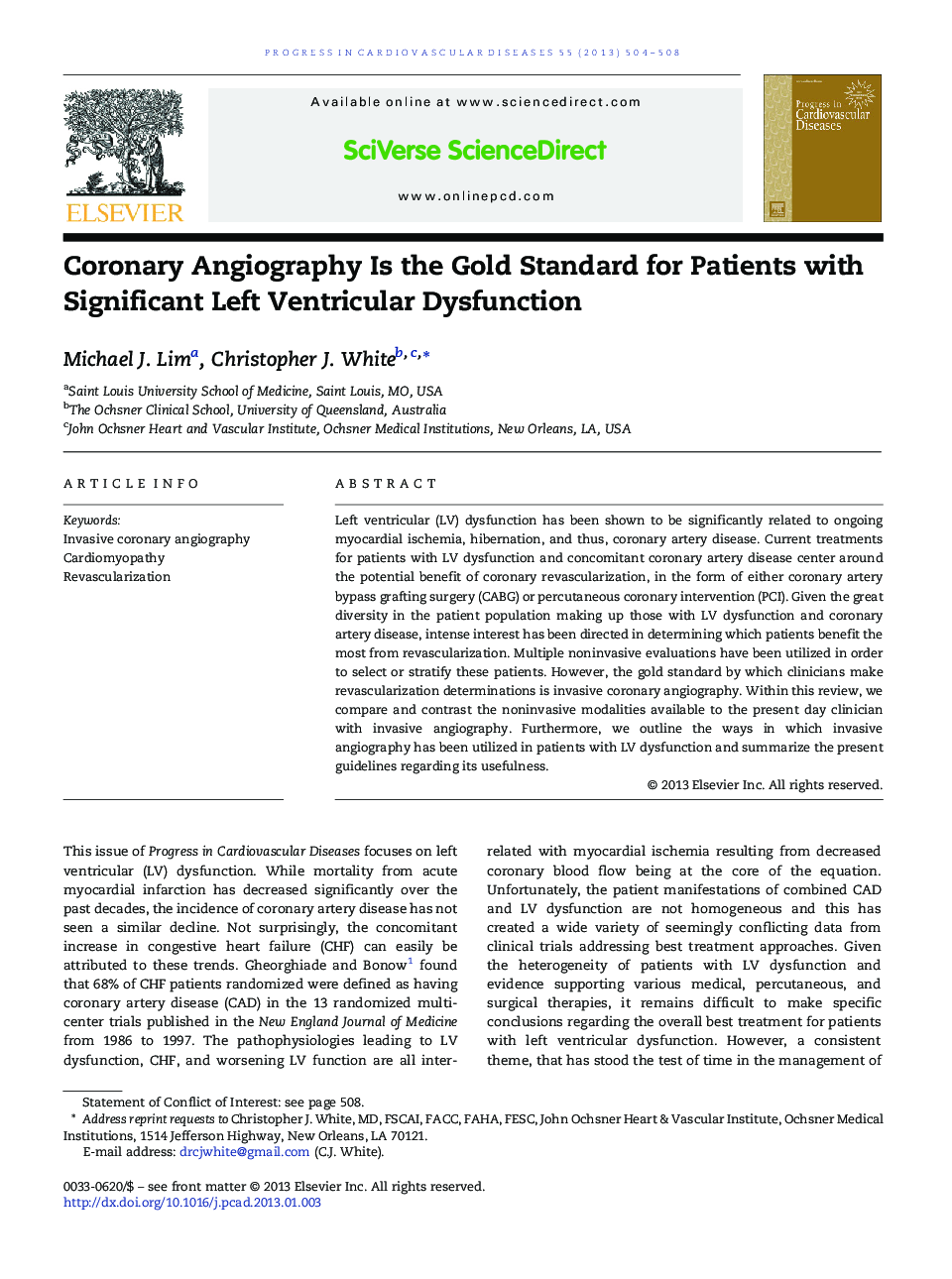| کد مقاله | کد نشریه | سال انتشار | مقاله انگلیسی | نسخه تمام متن |
|---|---|---|---|---|
| 3006707 | 1180998 | 2013 | 5 صفحه PDF | دانلود رایگان |

Left ventricular (LV) dysfunction has been shown to be significantly related to ongoing myocardial ischemia, hibernation, and thus, coronary artery disease. Current treatments for patients with LV dysfunction and concomitant coronary artery disease center around the potential benefit of coronary revascularization, in the form of either coronary artery bypass grafting surgery (CABG) or percutaneous coronary intervention (PCI). Given the great diversity in the patient population making up those with LV dysfunction and coronary artery disease, intense interest has been directed in determining which patients benefit the most from revascularization. Multiple noninvasive evaluations have been utilized in order to select or stratify these patients. However, the gold standard by which clinicians make revascularization determinations is invasive coronary angiography. Within this review, we compare and contrast the noninvasive modalities available to the present day clinician with invasive angiography. Furthermore, we outline the ways in which invasive angiography has been utilized in patients with LV dysfunction and summarize the present guidelines regarding its usefulness.
Journal: Progress in Cardiovascular Diseases - Volume 55, Issue 5, March–April 2013, Pages 504–508